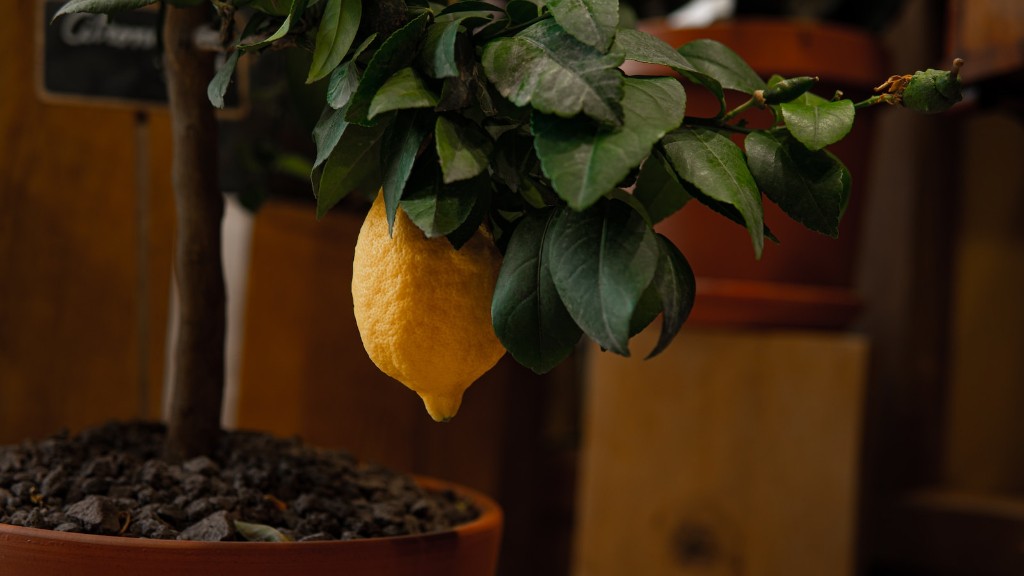How much Does a Cherry Tree Grow Each Year
Cherry trees are a wonderful and popular choice for many gardeners, providing lovely blossoms in the spring and a bounty of delicious cherries in the summer. But how much does a cherry tree grow each year? As with most fruit trees, cherry trees grow at varying rates and depend on several factors, such as the climate and other environmental conditions.
Experts suggest that cherry trees can grow from two to five inches per year, although this is just a general guideline. The growth rate may also vary with climate. Generally, the warmer the climate, the faster the cherry tree will grow. A colder climate can slow down the growth rate.
When planning to plant a cherry tree, it is important to consider sunlight as well. Cherry trees need at least six hours of direct sunlight a day, so be sure to pick a planting spot that will get enough sun. If the cherry tree does not receive enough sun, it will likely not grow as much.
The soil quality is also an important factor. Cherry trees prefer soil that is moist but not soggy, so be sure to find a spot with good quality soil that is well-draining. Additionally, soil pH is important. Cherry trees prefer a slightly acidic soil with a pH of 6.0 to 7.0. The soil can be tested beforehand to determine its pH
Cherry trees also need plenty of water in order to grow quickly. Watering the tree at least once a week can help ensure that it has enough moisture. But it is important to avoid over-watering, as this can lead to root rot.
Although cherry trees can grow quickly, they do not reach their full potential until after five to seven years. Once the tree is mature, it will be ready to produce blossoms and fruit. It is important to note that not all cherry trees will produce fruit, as some are ornamental cultivars.
Fertilizer
Fertilizer is another important factor for promoting optimal growth for cherry trees. Fertilization should be done in early spring and late summer. An all-purpose fertilizer is usually sufficient, but consult a local gardening store or nursery for specific brand recommendations. The following spring, you can also spread lime around the base of the tree to help provide a more balanced soil pH.
Pruning is also important to promote healthy growth and to ensure that the cherry tree develops correctly. Pruning should be done periodically in late winter or early spring, and remove any broken or diseased branches. This will help open up air vents and promote new growth.
Overall, the rate at which a cherry tree grows each year will vary depending on the climate, soil, and other environmental factors. However, an approximate growth rate of two to five inches per year can be expected. With proper care and attention, a cherry tree can thrive for years and provide delicious, nutritious fruit and beautiful blossoms.
Harvesting
Once the cherry tree is in full bloom, it peaks in the spring with a breathtaking sea of pink and white blossoms that can fill the entire yard with their beauty and fragrance. Once the blossoms are gone, it’s time to prepare for the harvest. Depending on the type of cherry tree, the harvest can happen in early summer, mid-summer, or late summer. Generally, the fruit is ready to be picked when it’s slightly soft and has changed color.
However, the harvest time will vary depending on the type of cherry tree, so it is important to research which type of tree you have and when to expect the harvest. When harvesting, it is important to do so gently, as the fruit can be easily damaged by bruising or breaking. Some cherry cultivars can be picked directly from the tree while others require a ladder to reach.
Once the harvest is complete, the cherries can be eaten right away or stored in the refrigerator and enjoyed later. The cherries can also be canned, frozen, or dried for longer enjoyment. All in all, a cherry tree can provide a plentiful harvest for many years to come and make an excellent addition to any garden.
Disease and Issues
It is important to note that, like any other plant or tree, cherry trees can be affected by various diseases and issues. Bacterial canker is a disease that is caused by superficial injuries to the bark and can spread quickly. It is important to prune and care for the tree in a way that will help prevent the spread of this disease.
Fungal infections are another common issue that can affect cherry trees. The most common type of fungal infection is brown rot, which can be caused by too much moisture around the tree. To prevent this, it is important to ensure that the cherry tree is planted in an area with good drainage and not overwatered.
Pests can also be a problem for cherry trees. The most common pests are cherry fruit flies and Japanese beetles. Applying an insecticide to the tree at least twice a month during the growing season can help deter pests from infesting the tree.
Conclusion
Cherry trees can make a wonderful addition to any garden. They are easy to grow and provide beautiful pink and white blossoms in the spring and a delicious harvest of cherries in the summer. The rate at which a cherry tree grows each year can vary depending on environmental factors, but an approximate rate of two to five inches is typical. With proper care and attention, a cherry tree can thrive for years and provide many years of delicious and nutritious fruit.



